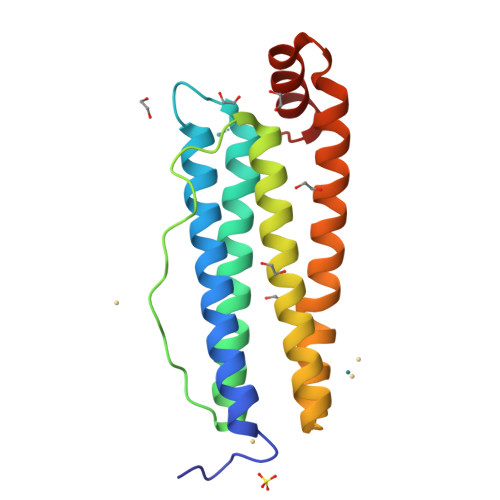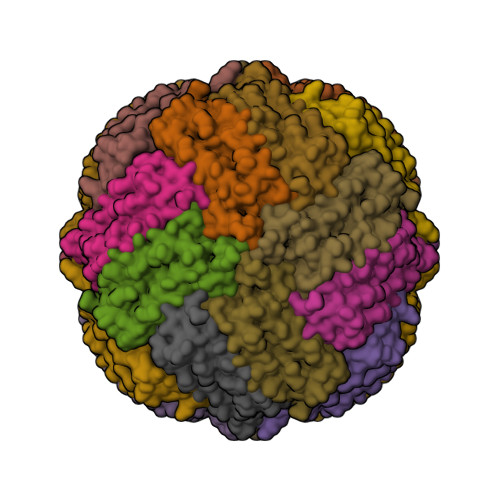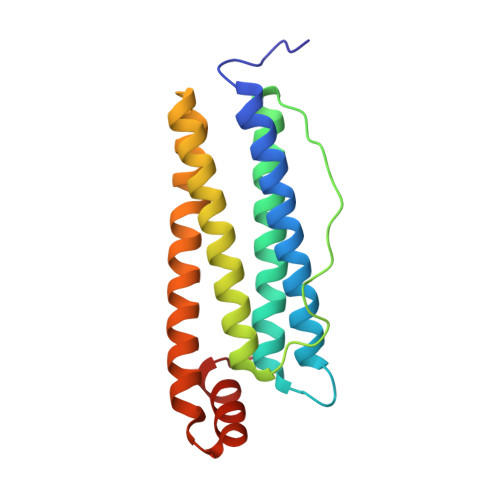Intracellular CO release from composite of ferritin and ruthenium carbonyl complexes.
Fujita, K., Tanaka, Y., Sho, T., Ozeki, S., Abe, S., Hikage, T., Kuchimaru, T., Kizaka-Kondoh, S., Ueno, T.(2014) J Am Chem Soc 136: 16902-16908
- PubMed: 25352251
- DOI: https://doi.org/10.1021/ja508938f
- Primary Citation of Related Structures:
3WVU, 3WVV, 3WVW - PubMed Abstract:
Protein cages have been utilized as templates in the development of biomaterials. Here we report protein engineering of the ferritin (Fr) cage for encapsulating carbon monoxide releasing molecules (CORMs) and release of CO gas which serves as a cell signaling molecule. The protein cages enable us to increase the half-life for CO release, providing a release rate that is 18-fold slower than the rate of a typical CORM, Ru(CO)3Cl(glycinate) (CORM-3). Moreover, the uptake ratio of the composite is about 4-fold greater than that of CORM-3. We found that these effects enhance the activation of nuclear factor κB 10-fold higher than CORM-3. The protein cage of Fr thus provides the basis for new CORMs that can be used for in vitro cell research.
Organizational Affiliation:
Department of Biomolecular Engineering, Graduate School of Bioscience and Biotechnology, Tokyo Institute of Technology , Nagatsuta-cho 4259-B55, Midori-ku, Yokohama 226-8501, Japan.




















